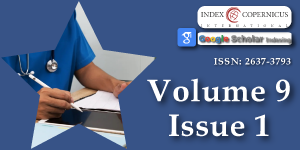Understanding Burnout Rates for Clinicians and Physical Symptoms of Allostatic Load
Main Article Content
Abstract
Burnout among clinicians is a pressing concern worldwide, manifesting as emotional exhaustion, depersonalization, and reduced professional efficacy. This article explores the intersection of burnout and allostatic load, the physiological burden resulting from chronic stress, to elucidate the consequences for healthcare providers. Burnout impacts clinicians’ mental and physical health, leading to compromised patient care, reduced job satisfaction, and increased attrition rates. A comparative analysis of recent scholarly works reveals converging evidence on systemic contributors such as excessive workloads, inadequate support systems, and organizational inefficiencies, further compounded by individual vulnerabilities like lack of resilience. These challenges have been exacerbated by the COVID-19 pandemic, which has significantly increased stress levels among healthcare professionals globally.
This article synthesizes insights from studies conducted between 2020 and 2024, emphasizing the need for holistic approaches to mitigate burnout. It highlights the physiological underpinnings of allostatic load, including chronic dysregulation of stress-response systems that predispose clinicians to adverse health outcomes like cardiovascular diseases, immune dysfunction, and mental health disorders. To address these issues, the article proposes a multidimensional strategy encompassing organizational reforms, evidence-based interventions, and policy advocacy. Recommendations include reducing administrative burdens, fostering supportive work environments, and integrating wellness programs targeting both systemic and individual stressors. Limitations and directions for future research emphasize the importance of inclusive, longitudinal studies focusing on diverse populations to develop tailored solutions. This comprehensive approach aims to enhance clinician well-being and improve healthcare outcomes globally.
Article Details
Copyright (c) 2025 Nevels BJ, et al.

This work is licensed under a Creative Commons Attribution-NonCommercial 4.0 International License.
The Archives of Case Reports is committed in making it easier for people to share and build upon the work of others while maintaining consistency with the rules of copyright. In order to use the Open Access paradigm to the maximum extent in true terms as free of charge online access along with usage right, we grant usage rights through the use of specific Creative Commons license.
License: Copyright © 2017 - 2025 |  Open Access by Archives of Case Reports is licensed under a Creative Commons Attribution 4.0 International License. Based on a work at Heighten Science Publications Inc.
Open Access by Archives of Case Reports is licensed under a Creative Commons Attribution 4.0 International License. Based on a work at Heighten Science Publications Inc.
With this license, the authors are allowed that after publishing with the journal, they can share their research by posting a free draft copy of their article to any repository or website.
Compliance 'CC BY' license helps in:
| Permission to read and download | ✓ |
| Permission to display in a repository | ✓ |
| Permission to translate | ✓ |
| Commercial uses of manuscript | ✓ |
'CC' stands for Creative Commons license. 'BY' symbolizes that users have provided attribution to the creator that the published manuscripts can be used or shared. This license allows for redistribution, commercial and non-commercial, as long as it is passed along unchanged and in whole, with credit to the author.
Please take in notification that Creative Commons user licenses are non-revocable. We recommend authors to check if their funding body requires a specific license.
Shanafelt TD, Boone S, Tan L, Dyrbye LN, Sotile W, Satele D,, et al. Burnout and satisfaction with work-life balance among US physicians relative to the general US population. Arch Intern Med. 2012;172(18):1377-85. Available from: https://doi.org/10.1001/archinternmed.2012.3199
National Academy of Medicine. Taking Action against Clinician Burnout: A Systems Approach to Professional Well-Being. 2021.
Livingston V, Jackson-Nevels B, Reddy VV. Social and economic determinants of well-being. Encyclopedia. 2022;2:1183-1199. Available from: https://doi.org/10.3390/encyclopedia2030079
Bau N, Khoury A, Nguyen T. Systemic inequities and stressors: Burnout in frontline healthcare workers during COVID-19. J Public Health Res. 2022;11(1):345-356.
Jackson-Nevels B, Davis-Wagner D, Chung I, Green G. An HBCU examination: Flourishing and psychological wellbeing of college students during a pandemic. Soc Work Ment Health. 2024;22(3):374-392. Available from: https://doi.org/10.1080/15332985.2024.2314469
Chirico F. Burnout and allostatic load among healthcare workers during COVID-19. Int J Environ Res Public Health. 2021;18(2):610.
Maslach C, Leiter MP. Understanding the burnout experience. World Psychiatry. 2016;15(2):103-111. Available from: https://doi.org/10.1002/wps.20311
Bai Y, Lin CC, Chueh KH. Psychological distress and resilience during COVID-19: A comparative study. Psychol Res Behav Manag. 2022;15:301-310.
Almeida M, Davidsen AS. Burnout among healthcare professionals: A scoping review. Scand J Public Health. 2020;48(7):706-716.
Anderson GN. Addressing systemic burnout among frontline workers: Lessons from COVID-19. J Occup Health Psychol. 2022;27(2):156-170.

